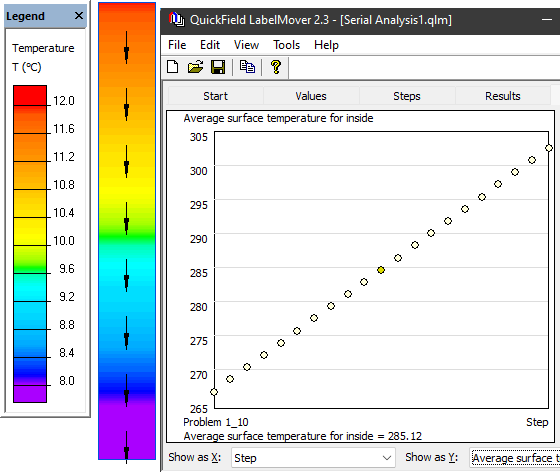Glass film heater
QuickField simulation example
Electric film heater is used to heat up the window glass.
Problem Type
Plane-parallel problem of Heat Transfer.
Geometry
Given
Film thickness t = 0.01 mm, heat power q = 0..1000 W/m².
Thermal conductivity of glass 1 W/m*K, thermal conductivity of film 4 W/m*K.
Inside air temperature +20°C, surface resistance* 0.13 K·m²/W.
Outside air temperature -15°C, surface resistance* 0.04 K·m²/W.
Task
Calculate the glass temperature as a function of the heater power q.
Solution
In QuickField we specify volume power density:
Volume power [W/m³] = Heat power q [W/m²] / Film thickness t [m].
In QuickField we specify the convection coefficient value that is reciprocal to the surface resistance value:
αinside = 1/0.13 W/(K·m²),
αoutside = 1/0.04 W/(K·m²).
A set of problems with different power sources is simulated. Creation of the new problems, data modification and results measurements are automated with LabelMover.
Result
After the film heater power reaches 250 W/m² the outer side of the glass temperature becomes positive.
After the film heater power reaches 500 W/m² the inner side of the glass temperature becomes higher than a dew point** temperature of 11°C.
When film heater power reaches 750 W/m² the inner side of the glass temperature becomes warmer than that of the inner air the glass starts to heat up the air inside.
Temperature distribution in the glass with the film heater power of 500 W/m² is shown on the picture below. The temperatures in LabelMover are displayed in Kelvins.

References:
* ISO 10077-2:2012 Thermal performance of windows, doors and shutters.
** Wikipedia, Dew point.
- Video: Glass film heater. Watch on YouTube.
- Download simulation files (files may be viewed using any QuickField Edition).